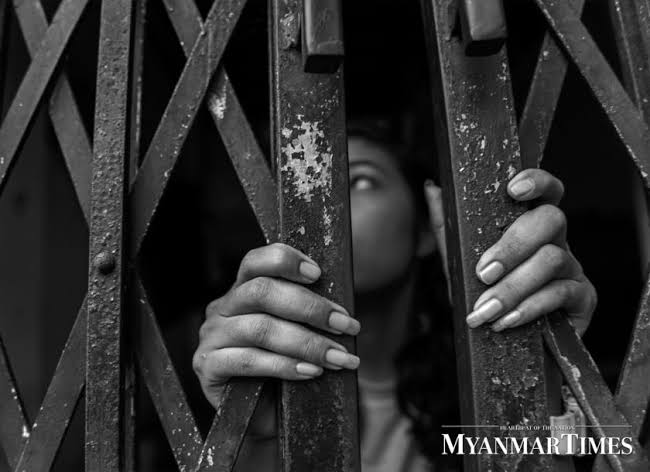By Akanimo Sampson
The number of trafficking victims from Côte d’Ivoire in Tunisia is zooming significantly since 2012, according to official figures, just as Africa is thought to be the source of the most migrant deaths worldwide, yet data collection on the reasons, frequency and details of migrant mortality remains elusive.
That was just one take-away from a two-day International Organisation for Migration (IOM) conference in Senegal. The session convened to an open discussion of concrete areas of collaboration between actors working on the issue of migrant deaths and disappearances in Africa.
It however, began Monday in Dakar, with the participation of more than two dozen experts and representatives of international, regional and local organisations.
The workshop entitled Missing Migrants in Africa: Addressing Data and Knowledge Gaps on Migrant Deaths and Disappearances, was organised by IOM’s Global Migration Data Analysis Centre (GMDAC) and hosted by IOM’s Regional Office for West and Central Africa.
Despite six years of IOM work on this issue, there is not yet a comprehensive record of the number of people who have lost their lives during their migration journeys in the continent. The only figure available, collected by IOM’s Missing Migrants Project, shows that nearly 7,500 people have died since 2014. This includes 2,040 people who are known to have died while migrating in the Sahara Desert.
Thousands of Africans are known to have perished among nearly 17,000 men, women and children lost in the waters of the Mediterranean Sea, the world’s most lethal known migratory route. However, the remains of about two-thirds of those victims remain missing, making it almost impossible to know who those victims were, and which African citizenship they held.
Moreover, Frank Laczko, GMDAC’s Director, said these figures are likely very conservative undercounts, as the vast majority of deaths are recorded based on unverifiable eyewitness reports. Hundreds of additional deaths likely remain unreported and uncounted, an indication of the invisibility of irregular migrants and the indifference the world has for this issue.
Incomplete data on migrant deaths and disappearances results in the underestimation of the toll of unsafe migration across the continent.
“Better data are needed to facilitate the development of evidence-based policies and protection measures to prevent further deaths,” explained Dr. Laczko. “Associated with the need to better record numbers of dead is the requisite to improve identification of those who have died, to allow more families to know the fate of their missing relatives.”
Addressing gaps in data on missing migrants requires concerted effort from a wider and diverse network of key stakeholders involved in collection, sharing, analysing and presentation of data on migrant deaths and disappearances.
“The Dakar workshop has engaged key actors from international agencies, non-governmental organizations, governments and academia to examine how to improve the collection, management and exchange of information between relevant actors and across sectors,” added Richard Danziger, IOM’s Regional Director for West and Central Africa.
The knowledge and insights gathered through the workshop will inform IOM’s future efforts to address the many challenges involved in collecting information on missing migrants in Africa. These efforts include plans to establish data monitors in all regional offices, as well as a new pilot research project focusing on the families of missing migrants to better understand their needs.
IOM’s Missing Migrants Project, documents deaths and disappearances along migratory routes worldwide. Today, the project hosts the only existing database on deaths during migration globally. However, there is still a need to expand and improve data collection in many regions of the world, particularly in Africa, where many experts have stated that many more migrants die or go missing than are currently recorded.
In the mean time, between January 2012 and October 2019, 85 per cent of the 823 victims of trafficking identified by the IOM in the North African country were Ivorians. Most of the 575 Ivorian victims – mainly women (including three minors) – were in situations of domestic servitude in the Tunisian cities of Sfax, Tunis, Sousse, and Gabes.
In a bid to strengthen bilateral co-operation and partnerships between the two countries in the fight against trafficking in persons, IOM conducted a study visit from October 28 to November 2 in Côte d’Ivoire, which included an exchange workshop attended by 40 experts from the anti-trafficking authorities in both countries.
Côte d’Ivoire is one of the main countries of origin for migrants who use the Central Mediterranean Route with 23,000 arriving in Italy by sea since 2016. Tunisia is often the first step in the irregular migration process, due to the special visa regime put in place between the two countries, which allows Ivorian nationals to stay in the country on a regular basis without a visa for up to 90 days.
The objective of the Abidjan workshop was to foster dialogue and promote the establishment of operational mechanisms for an effective collaboration on prevention, protection, prosecution and partnerships in the field of trafficking in persons.
The visit illustrates “IOM’s commitment to strengthening the co-operation between Côte d’Ivoire and Tunisia by setting up concrete mechanisms for operational co-operation,” said Marina Schramm, Chief of Mission of IOM Côte d’Ivoire.
Victims identified by IOM are referred to the National Anti-Trafficking Authority (INLCTP) in Tunis for protection and direct assistance. In 2018, 213 victims were referred to the INLCTP by IOM Tunisia and 332 in 2019.

